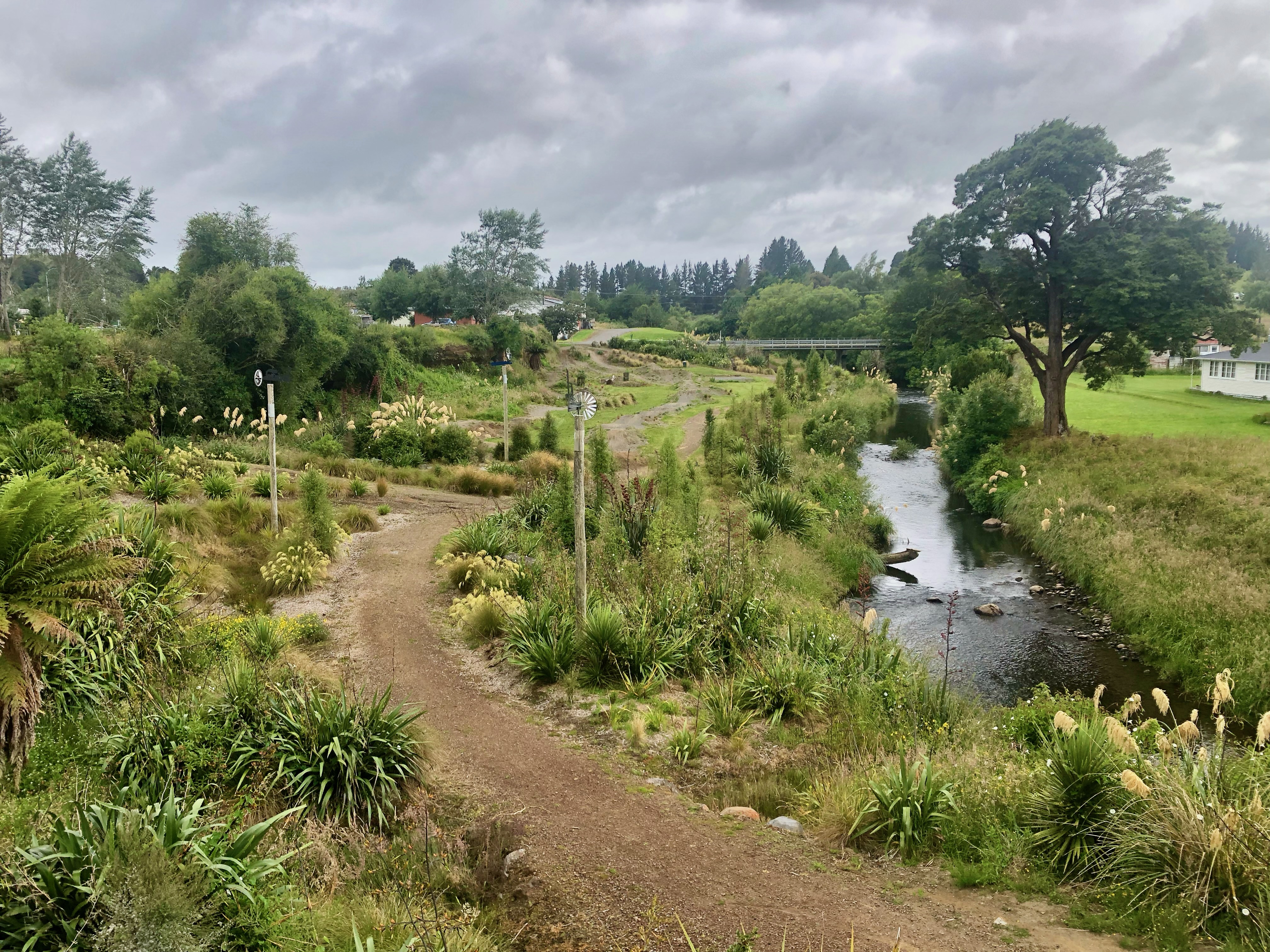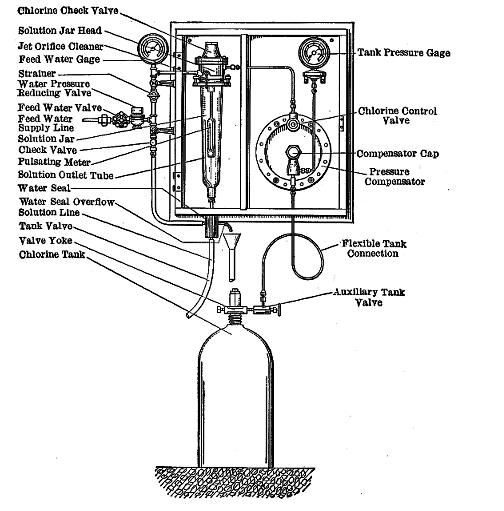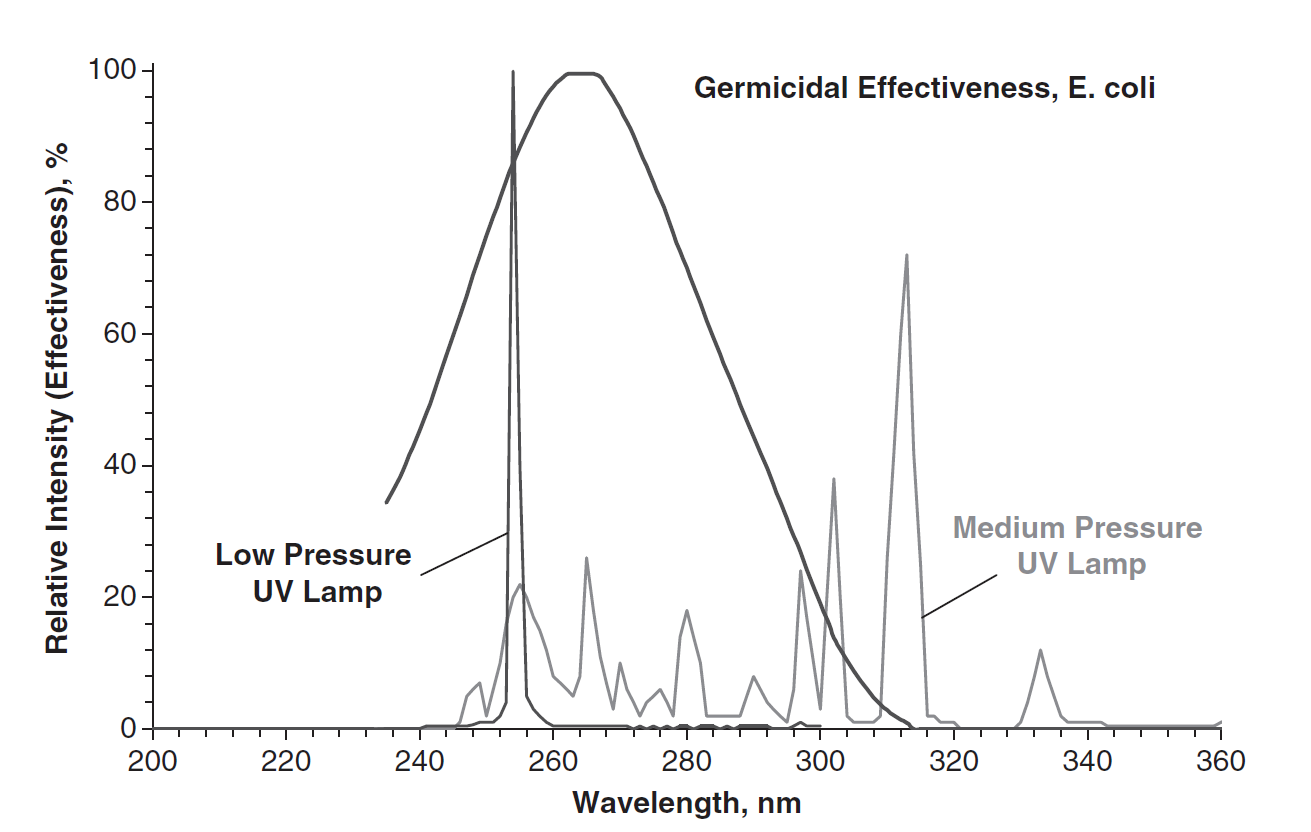|
Makotuku River
The Makotuku River is a river of the west of New Zealand's North Island. It flows southwest from Tūroa ski field, on the slopes of Mount Ruapehu, and passes through the town of Raetihi before its confluence with the Mangawhero River. It has been affected by several lahars over the last 160,000 years. The New Zealand Ministry for Culture and Heritage gives a translation of "white heron stream" for ''Mākōtuku''. Water quality The long term e. coli rating for the river at Raetihi is poor. Water supply Raetihi's drinking water comes from the river. In 2018 Veolia added activated carbon dosing, coagulation, flocculation, a lamella settler, filters and UV disinfection to the previous two settling ponds and chlorination, to minimise the effect of future pollution events. Oil spills In December 1979 of heating oil (diesel and kerosene) and, in September 2013, of diesel spilt into the river at the Turoa ski field, upstream. The 2013 leak required Raetihi to have 21 days ... [...More Info...] [...Related Items...] OR: [Wikipedia] [Google] [Baidu] |
Coagulation (water Treatment)
In water treatment, coagulation and flocculation involve the addition of compounds that promote the clumping of fine floc into larger floc so that they can be more easily separated from the water. Coagulation is a chemical process that involves neutralization of charge whereas flocculation is a physical process and does not involve neutralization of charge. The coagulation-flocculation process can be used as a preliminary or intermediary step between other water or wastewater treatment processes like filtration and sedimentation. Iron and aluminium salts are the most widely used coagulants but salts of other metals such as titanium and zirconium have been found to be highly effective as well. Factors Coagulation is affected by the type of coagulant used, its dose and mass; pH and initial turbidity of the water that is being treated; and properties of the pollutants present. The effectiveness of the coagulation process is also affected by pretreatments like oxidation. Mechanis ... [...More Info...] [...Related Items...] OR: [Wikipedia] [Google] [Baidu] |
List Of Rivers Of New Zealand
This is a list of all waterways named as rivers in New Zealand. A * Aan River * Acheron River (Canterbury) * Acheron River (Marlborough) * Ada River * Adams River * Ahaura River * Ahuriri River * Ahuroa River * Akatarawa River * Ākitio River * Alexander River * Alfred River * Allen River * Alma River * Alph River (Ross Dependency) * Anatoki River * Anatori River * Anaweka River * Anne River * Anti Crow River * Aongatete River * Aorangiwai River * Aorere River * Aparima River * Arahura River * Arapaoa River * Araparera River * Arawhata River * Arnold River * Arnst River * Aropaoanui River * Arrow River * Arthur River * Ashburton River / Hakatere * Ashley River / Rakahuri * Avoca River (Canterbury) * Avoca River (Hawke's Bay) * Avon River / Ōtākaro * Avon River (Marlborough) * Awakari River * Awakino River (Canterbury) and its East and West branches * Awakino River (Northland) * Awakino River (Waikato) * Awanui River * Awapoko River * Awarau River * A ... [...More Info...] [...Related Items...] OR: [Wikipedia] [Google] [Baidu] |
Makotuku River And Raetihi-Ohakune Road Bridge
Makotuku is a locality in the Manawatu-Whanganui Region of New Zealand's North Island, about west of Ormondville. The settlement formed around the temporary railway terminus and was often called Makotoko. Makotuku probably refers to the place of the heron, or kōtuku. Makotuku is in meshblock 1534900, which had a population of 54 in 2018. It is part of the wider Norsewood statistical area, which covers . Makotuku School opened in 1881. By 1885 it had about 100 pupils. It merged into Norsewood School in 2003. In 1881 the Beaconsfield Hotel was moved from Kopua to a site next to the station. In 1888 it was replaced by a new hotel and the old one replaced the village hall. The new hotel burnt down in 1912. Makotuku Hotel was built in 1887. It was burnt down in 1933 and its owner was imprisoned for insurance fraud. In 1886 bush fires caused a relief fund to be set up for those who had lost their homes. An Anglican Church was built in 1890 and rebuilt after an 1898 fire. St Mar ... [...More Info...] [...Related Items...] OR: [Wikipedia] [Google] [Baidu] |
Hydroelectric Power In New Zealand
Hydroelectricity, or hydroelectric power, is electricity generated from hydropower (water power). Hydropower supplies one sixth of the world's electricity, almost 4500 TWh in 2020, which is more than all other renewable sources combined and also more than nuclear power. Hydropower can provide large amounts of low-carbon electricity on demand, making it a key element for creating secure and clean electricity supply systems. A hydroelectric power station that has a dam and reservoir is a flexible source, since the amount of electricity produced can be increased or decreased in seconds or minutes in response to varying electricity demand. Once a hydroelectric complex is constructed, it produces no direct waste, and almost always emits considerably less greenhouse gas than fossil fuel-powered energy plants. [...More Info...] [...Related Items...] OR: [Wikipedia] [Google] [Baidu] |
Whio
The blue duck or whio (''Hymenolaimus malacorhynchos'') is a member of the duck, goose and swan family Anatidae endemic to New Zealand. It is the only member of the genus ''Hymenolaimus''. Its exact taxonomic status is still unresolved, but it appears to be most closely related to the tribe Anatini, the dabbling ducks. The whio is depicted on the reverse side of the New Zealand $10 banknote. Taxonomy Captain James Cook saw the blue duck in Dusky Sound, South Island, New Zealand, on his second voyage to the south Pacific. In 1777 both Cook and the naturalist Georg Forster mentioned the blue duck in their separate accounts of the voyage. A specimen was described in 1785 by the English ornithologist John Latham in his ''A General Synopsis of Birds''. Latham used the English name, the "soft-billed duck". When in 1789 the German naturalist Johann Friedrich Gmelin revised and expanded Carl Linnaeus's ''Systema Naturae'' he included the blue duck and placed it with all the othe ... [...More Info...] [...Related Items...] OR: [Wikipedia] [Google] [Baidu] |
Mayfly
Mayflies (also known as shadflies or fishflies in Canada and the upper Midwestern United States, as Canadian soldiers in the American Great Lakes region, and as up-winged flies in the United Kingdom) are aquatic insects belonging to the order Ephemeroptera. This order is part of an ancient group of insects termed the Palaeoptera, which also contains dragonflies and damselflies. Over 3,000 species of mayfly are known worldwide, grouped into over 400 genera in 42 families. Mayflies have ancestral traits that were probably present in the first flying insects, such as long tails and wings that do not fold flat over the abdomen. Their immature stages are aquatic fresh water forms (called "naiads" or "nymphs"), whose presence indicates a clean, unpolluted and highly oxygenated aquatic environment. They are unique among insect orders in having a fully winged terrestrial preadult stage, the subimago, which moults into a sexually mature adult, the imago. Mayflies "hatch" (emerge ... [...More Info...] [...Related Items...] OR: [Wikipedia] [Google] [Baidu] |
Kerosene
Kerosene, paraffin, or lamp oil is a combustible hydrocarbon liquid which is derived from petroleum. It is widely used as a fuel in aviation as well as households. Its name derives from el, κηρός (''keros'') meaning "wax", and was registered as a trademark by Canadian geologist and inventor Abraham Gesner in 1854 before evolving into a generic trademark. It is sometimes spelled kerosine in scientific and industrial usage. The term kerosene is common in much of Argentina, Australia, Canada, India, New Zealand, Nigeria, and the United States, while the term paraffin (or a closely related variant) is used in Chile, eastern Africa, South Africa, Norway, and in the United Kingdom. The term lamp oil, or the equivalent in the local languages, is common in the majority of Asia and the Southeastern United States. Liquid paraffin (called mineral oil in the US) is a more viscous and highly refined product which is used as a laxative. Paraffin wax is a waxy solid extracted from pet ... [...More Info...] [...Related Items...] OR: [Wikipedia] [Google] [Baidu] |
Diesel Fuel
Diesel fuel , also called diesel oil, is any liquid fuel specifically designed for use in a diesel engine, a type of internal combustion engine in which fuel ignition takes place without a spark as a result of compression of the inlet air and then injection of fuel. Therefore, diesel fuel needs good compression ignition characteristics. The most common type of diesel fuel is a specific fractional distillate of petroleum fuel oil, but alternatives that are not derived from petroleum, such as biodiesel, biomass to liquid (BTL) or gas to liquid (GTL) diesel are increasingly being developed and adopted. To distinguish these types, petroleum-derived diesel is sometimes called petrodiesel in some academic circles. In many countries, diesel fuel is standardised. For example, in the European Union, the standard for diesel fuel is EN 590. Diesel fuel has many colloquial names; most commonly, it is simply referred to as ''diesel''. In the United Kingdom, diesel fuel for on-road use is c ... [...More Info...] [...Related Items...] OR: [Wikipedia] [Google] [Baidu] |
Water Chlorination
Water chlorination is the process of adding chlorine or chlorine compounds such as sodium hypochlorite to water. This method is used to kill bacteria, viruses and other microbes in water. In particular, chlorination is used to prevent the spread of waterborne diseases such as cholera, dysentery, and typhoid. History In a paper published in 1894, it was formally proposed to add chlorine to water to render it "germ-free". Two other authorities endorsed this proposal and published it in many other papers in 1895. Early attempts at implementing water chlorination at a water treatment plant were made in 1893 in Hamburg, Germany. In 1897 the town of Maidstone, England was the first to have its entire water supply treated with chlorine. Permanent water chlorination began in 1905, when a faulty slow sand filter and a contaminated water supply caused a serious typhoid fever epidemic in Lincoln, England. Alexander Cruickshank Houston used chlorination of the water to stop the epidemic. ... [...More Info...] [...Related Items...] OR: [Wikipedia] [Google] [Baidu] |
Settling Pond
A settling basin, settling pond or decant pond is an earthen or concrete structure using sedimentation to remove settleable matter and turbidity from wastewater. The basins are used to control water pollution in diverse industries such as agriculture, aquaculture, and mining. Turbidity is an optical property of water caused by scattering of light by material suspended in that water. Although turbidity often varies directly with weight or volumetric measurements of settleable matter, correlation is complicated by variations in size, shape, refractive index, and specific gravity of suspended matter. Settling ponds may be ineffective at reducing turbidity caused by small particles with specific gravity low enough to be suspended by Brownian motion. Range of applications Settling basins are used as a separation mechanism to eliminate rejected products (i.e. waste solids management strategies) of a specified size and quantity in various fields, such as aquaculture, mining, dairy, foo ... [...More Info...] [...Related Items...] OR: [Wikipedia] [Google] [Baidu] |
Ultraviolet Germicidal Irradiation
Ultraviolet germicidal irradiation (UVGI) is a disinfection method that uses short-wavelength ultraviolet (ultraviolet C or UV-C) light to kill or inactivate microorganisms by destroying nucleic acids and disrupting their DNA, leaving them unable to perform vital cellular functions. UVGI is used in a variety of applications, such as food, surface, air, and water purification. UV-C light is weak at the Earth's surface since the ozone layer of the atmosphere blocks it. UVGI devices can produce strong enough UV-C light in circulating air or water systems to make them inhospitable environments to microorganisms such as bacteria, viruses, molds, and other pathogens. Recent studies have proven the ability of UVC light in inactivating the novel Coronavirus (COVID-19). UVGI can be coupled with a filtration system to sanitize air and water. The application of UVGI to disinfection has been an accepted practice since the mid-20th century. It has been used primarily in medical sanitation a ... [...More Info...] [...Related Items...] OR: [Wikipedia] [Google] [Baidu] |









